Avoiding Common Mistakes When Using a Chainsaw
- December 6, 2023
- 0 comment
Chainsaws, renowned for their sharp, swiftly moving chains, stand as essential tools in the realm of woodcutting, whether it’s slicing through dense logs or trimming trees. Yet, their power and efficiency come with a significant responsibility for safe handling and maintenance. Intriguingly, the Centers for Disease Control and Prevention reports that over 36,000 individuals annually fall victim to chainsaw-related injuries. This statistic underscores the importance of understanding and respecting these powerful machines.

This comprehensive guide aims to navigate you through the critical aspects of chainsaw usage and upkeep, arming you with knowledge to sidestep common pitfalls that could lead to injuries or damage to your invaluable equipment.
1. Avoid Cutting Into Dirt
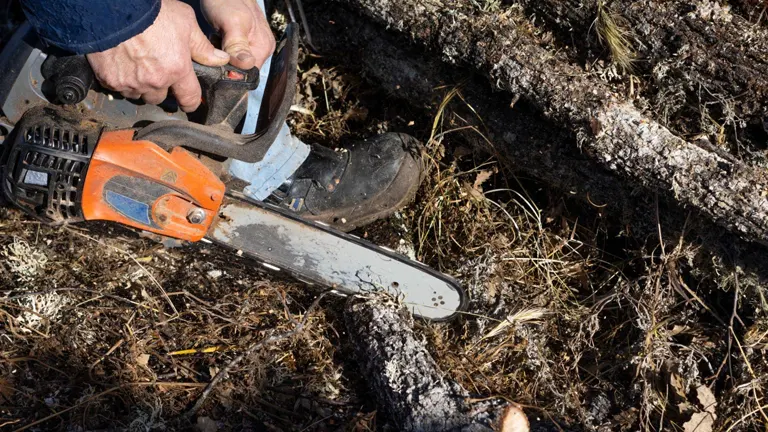
It’s crucial to be mindful of your chainsaw’s proximity to the ground during use. Cutting too close to the earth’s surface poses a high risk of the saw coming into contact with dirt, rocks, and various forms of debris. Such encounters are detrimental to your chainsaw, as they can rapidly dull the blades and cause accelerated wear on critical components like the chain and sprocket. To circumvent these issues, always ensure that the logs or wood you are cutting are adequately elevated above the ground. This practice not only prevents unintentional contact with dirt but also contributes significantly to maintaining your chainsaw’s condition and prolonging its lifespan. By adopting this simple yet effective measure, you can keep your chainsaw performing optimally and avoid unnecessary damage.
2. Keep the Chain Tension Right
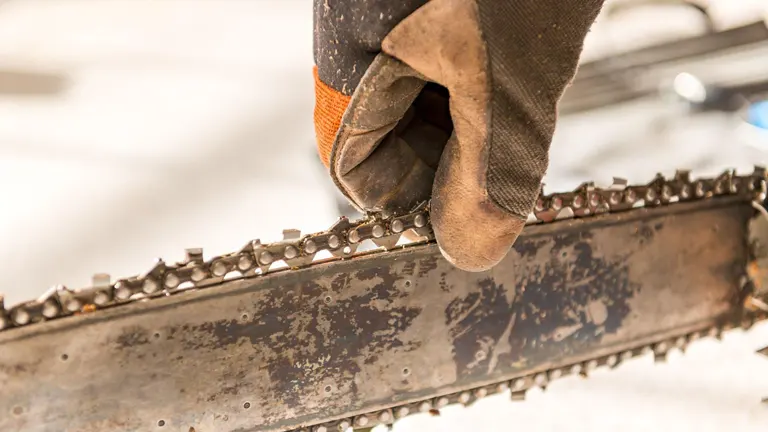
Ensuring the correct tension in your chainsaw’s chain is a key aspect of its maintenance and safe operation. An improperly tensioned chain – whether too loose or too tight – not only poses a safety hazard but also accelerates wear and tear. To verify the tension, gently pull on the chain. The links should fit snugly within the bar’s groove and not lift out easily. If the chain is too loose or too tight, make the necessary adjustments to achieve the optimal tension.
3. Selecting the Right Chain Lube
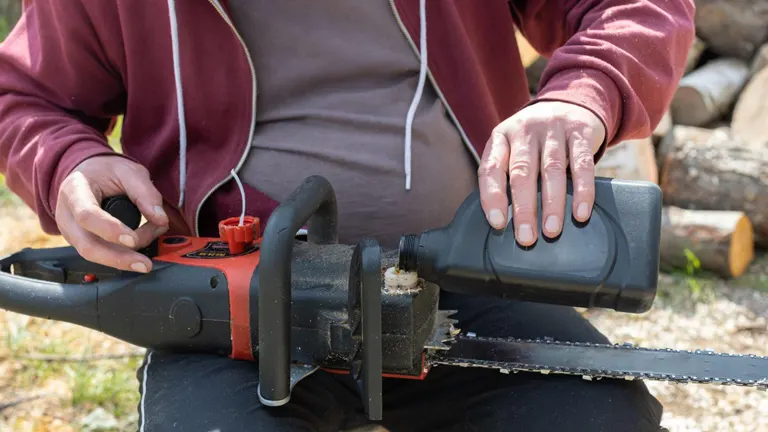
Choosing the appropriate lubricant for your chainsaw’s chain is crucial for its optimal performance and longevity. It’s advisable to steer clear of using motor oil as a substitute because it often contains impurities and contaminants that can be detrimental to the delicate moving parts of your chainsaw. These contaminants can lead to increased wear and tear, potentially shortening the lifespan of your equipment. Instead, always use the chain lube specifically recommended for your chainsaw model. This specialized lube is formulated to provide the right viscosity and protective properties needed to reduce friction and wear on the chain.
4. Pay Attention to the Brake
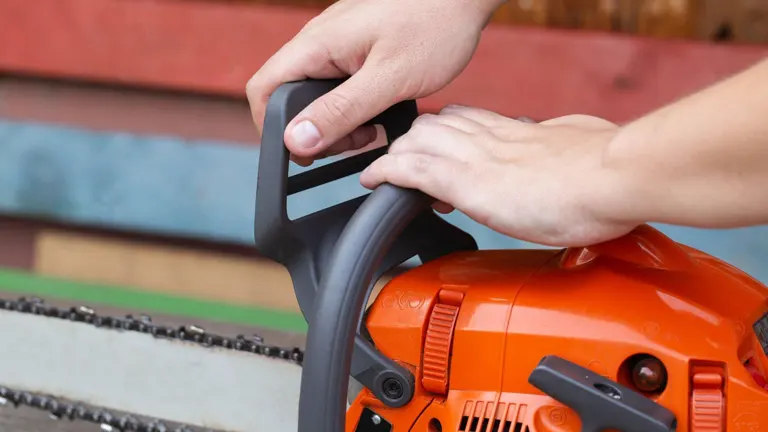
Understanding and respecting the kickback brake on your chainsaw is crucial for ensuring both your safety and the tool’s longevity. The kickback brake is specifically designed to rapidly stop the chain in the event of a kickback, a dangerous and sudden upward and backward motion of the chainsaw. This can occur in various scenarios, such as when the chain tip accidentally contacts a hard object or gets pinched in the wood, or when cutting above shoulder height, which can put the saw in an unstable position and increase the risk of losing control.
However, if the kickback brake is accidentally engaged while the chainsaw is running, it can cause significant damage, especially to the centrifugal clutch. This clutch is essential for controlling the chain’s rotation speed. Unexpected activation of the brake subjects the clutch to extreme stress and wear, potentially leading to costly repairs or replacements.
To prevent such issues, always make a habit of checking that the brake is not engaged before starting to cut. This practice not only helps in avoiding accidental damage to the chainsaw’s components but also plays a vital role in your safety. Kickback is one of the most common causes of chainsaw accidents, and understanding how to prevent it, along with proper use of the kickback brake, is key. By being vigilant about the state of the kickback brake, you ensure both your safety and the efficient functioning of your chainsaw, allowing it to serve you effectively for many years.
5. Regular Air Filter Maintenance

Maintaining a clean air filter is crucial for the efficient operation of your chainsaw. A clogged or dirty air filter allows dust and dirt to enter the engine, causing increased wear and potential damage. Regular cleaning or replacement of the air filter is a simple yet impactful step in preserving your chainsaw’s performance and longevity. This routine maintenance ensures that clean air is supplied to the engine, essential for optimal combustion and overall engine health, thereby keeping your chainsaw in top working condition for every use.
6. Safe Refueling Practices
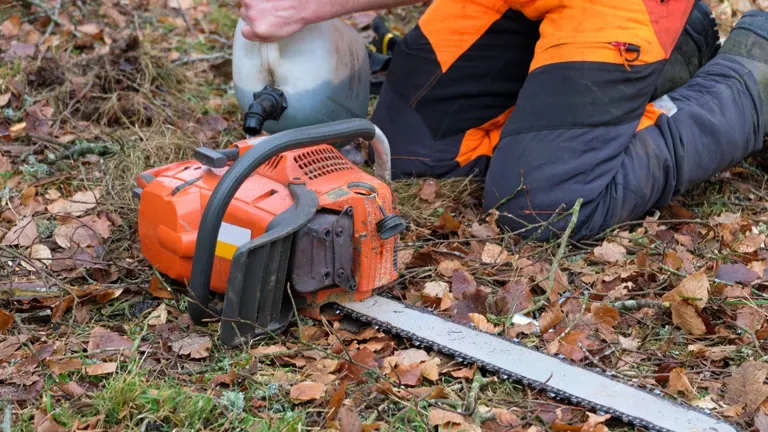
Safe refueling practices are essential when handling a chainsaw. It’s important to allow your chainsaw to completely cool down before attempting to refuel it. Refueling while the chainsaw is still hot poses a significant risk, as the heat can cause the fuel to vaporize, creating a highly flammable mixture that could easily ignite. To minimize this risk, it’s recommended to wait at least 10 minutes after use for the chainsaw to cool down.
7. Sharpen the Blade Regularly

Regular blade sharpening is key to maintaining your chainsaw’s efficiency and longevity. A dull blade not only makes cutting more laborious but also increases wear on the chainsaw, as you have to apply more pressure during use. An indicator that it’s time to sharpen the blade is when the chainsaw starts producing sawdust instead of chips. Keeping the blade sharp through regular maintenance ensures smoother cuts, reduces the strain on the chainsaw, and extends its usable life.
If you want to learn more about sharpening chainsaws check it out here! How To Sharpen A Chainsaw Properly: Tips and Tricks
8. Choose the Right Oil
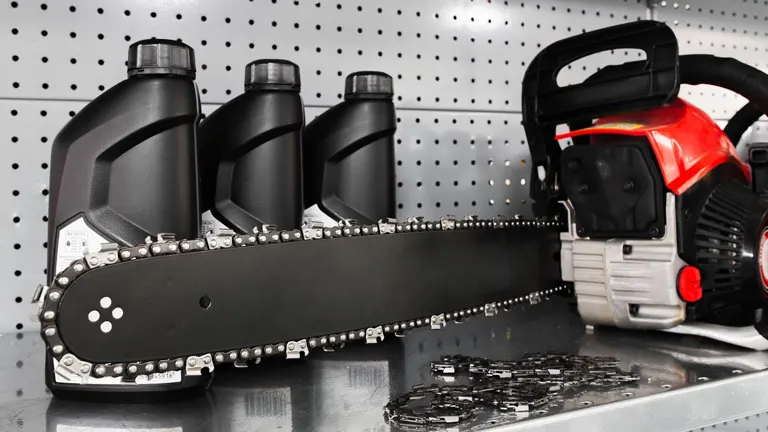
For your chainsaw’s gas mixture, always use 2-cycle oil. Avoid using regular motor oil as it can cause problems like spark plug fouling and carbon buildup, which can damage the engine. Using the right oil ensures your chainsaw runs smoothly and avoids unnecessary damage.
9. Careful Fuel Management

Be cautious with your chainsaw’s fuel. Add a fuel stabilizer to the gas, and don’t leave old gas in the tank during winter storage. Before putting your chainsaw away, empty the fuel tank and let the carburetor run dry. This helps prevent rust and gum buildup inside the engine. Proper fuel handling extends the life of your chainsaw.
Safety Gear and Techniques for Chainsaw Use: A Beginner’s Guide
Essential Safety Gear
- A crucial piece of equipment, helmets provide vital protection for your head against falling debris, a common hazard during chainsaw operations.
- Safety goggles or face shields are essential to protect your eyes from flying wood chips, while ear protection like earplugs or earmuffs is necessary to reduce the risk of hearing damage from the chainsaw’s noise.
- These specialized garments are designed to protect your legs from accidental cuts, a common injury when handling chainsaws.
- Sturdy boots not only provide a stable footing to prevent slips and falls but also offer protection for your feet from cuts and falling objects.
- A good pair of gloves improves your grip on the chainsaw and protects your hands from cuts and abrasions.
Preparation and Operation
- Before using a chainsaw, it’s important to thoroughly understand its features and safety mechanisms. The manual is your go-to guide for this information.
- Always check the chainsaw for any debris, ensure the teeth are sharp and well-lubricated, and verify that all controls are functioning properly. This pre-use inspection can prevent many common chainsaw accidents.
- Exercise caution with the weather, especially with electric chainsaws. Avoid using them in wet conditions to prevent the risk of electrical hazards.
- When using the chainsaw, maintain a stable stance and cut at waist level or below. Avoid overreaching to maintain control and balance, reducing the risk of accidents.
Common Mistakes to Avoid When Using a Chainsaw
1. Drop Starting
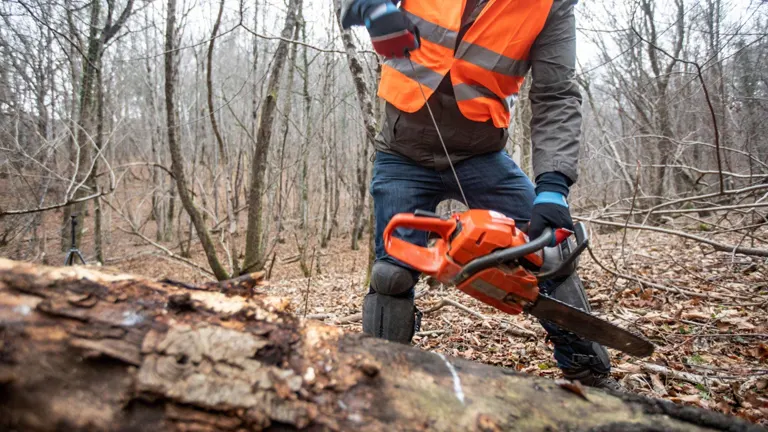
Drop starting a chainsaw is a method where the operator holds the saw with one hand and pulls the starter cord with the other. This approach is often seen as a quick and easy way to start the chainsaw, but it comes with significant risks. The main issue with drop starting is the lack of control over the chainsaw during the startup process. This can lead to unpredictable movements, increasing the likelihood of accidents and injuries. A much safer alternative is to place the chainsaw on stable ground and use both hands to start it. This method ensures maximum control and stability, greatly reducing the risk of accidents.
2. Cutting with the Blade Tip
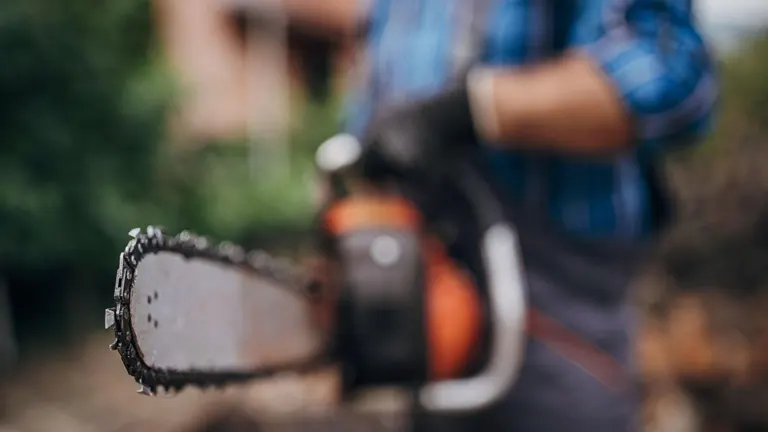
Using the tip of the chainsaw blade for cutting is a common mistake that can lead to dangerous kickbacks. Kickback occurs when the tip of the blade strikes an object or gets pinched, causing the chainsaw to jerk back toward the user. This can happen suddenly and with great force, posing a serious risk of injury. To avoid this, operators should always use the appropriate part of the blade for cutting and be mindful of the blade’s position relative to the wood and other objects. Avoiding the use of the tip for cutting is a crucial safety measure in chainsaw operations.
By being aware of and avoiding these common mistakes, chainsaw users can significantly enhance their safety and efficiency while operating these powerful tools. Remember, the key to safe chainsaw use lies in understanding the tool, respecting its power, and always prioritizing safety in every aspect of its operation.
Chainsaw Troubleshooting Guide
1. Clogged Chain Issues
- Symptoms: You might experience difficulty in cutting, find that your chainsaw produces excessive sawdust, or hear abnormal noises from the chain.
- Solutions: To address this, clean the bar and chain using a wire brush and a solvent like kerosene. If the blades are dull, sharpen or replace them to prevent clogging. Also, adjust the chain tension to ensure it fits snugly with a slight deflection when pulled.
2. Difficulties in Starting the Chainsaw
- Symptoms: Common signs include repeatedly pulling the cord without the chainsaw starting, or the engine starting weakly or sputtering.
- Solutions: Prime the engine as per the manufacturer’s instructions. Check the spark plug and replace it if it’s dirty or damaged. Ensure the air filter is clean to improve airflow and use fresh fuel mixed according to the manufacturer’s recommendations.
3. Stalled Engine During Operation
- Symptoms: The engine may stop abruptly while in use.
- Solutions: Ensure there’s enough fuel in the tank and refill if necessary. Inspect the fuel line for any blockages or leaks. If overheating is suspected, let the engine cool down before restarting.
4. Chain Slipping Off the Bar
- Symptoms: The chain may dislodge from the bar during operation.
- Solutions: Check the drive sprocket for wear and replace it if needed. Also, examine the bar for any signs of wear or bending and correct these issues. Make sure the chain is correctly and securely installed on the bar.
5. Excessive Vibration
- Symptoms: You might notice unusual shaking or vibrating while operating the chainsaw.
- Solutions: Tighten any loose nuts, bolts, or screws to reduce vibration. Replace worn anti-vibration mounts if necessary. Balance the chain to ensure smooth operation and reduce uneven forces that can cause vibration.
Conclusion: The Importance of Respect and Maintenance
Understanding and respecting the power of a chainsaw is fundamental to its safe and effective use. Chainsaws are powerful tools that, if not handled correctly, can be dangerous. By avoiding common mistakes such as improper starting methods, unsafe cutting techniques, and neglecting maintenance, you can significantly reduce the risk of accidents and ensure your chainsaw operates efficiently for years.
Whether you’re a professional using a chainsaw for heavy-duty tasks or a homeowner maintaining your garden, remember that safety and proper maintenance are not mere suggestions; they are essential practices in the world of chainsaw operation. Regular upkeep, combined with a respectful and cautious approach to using this powerful tool, will ensure that your chainsaw remains a reliable and valuable asset in your tool repertoire.
FAQs
- Can using a chainsaw on wet wood increase the risk of kickback?
Yes, cutting wet wood can sometimes increase the risk of kickback due to the chainsaw’s chain grabbing the wood differently than it does with dry wood. It’s important to adjust your cutting technique accordingly and ensure your chainsaw is well-maintained. - How does improper storage of a chainsaw lead to operational mistakes?
Improper storage, such as leaving the chainsaw in damp conditions or with fuel in the tank for extended periods, can cause parts to corrode or the fuel system to clog. This can lead to difficulties in starting the chainsaw and uneven cutting, increasing the risk of accidents. - Is there a risk of cutting at an incorrect angle, and how can I avoid it?
Cutting at an incorrect angle can cause the chainsaw to bind or kick back. Always cut with the blade perpendicular to the wood, and avoid cutting with the tip of the blade unless necessary and safe to do so. - Can overconfidence in handling a chainsaw lead to mistakes?
Absolutely. Overconfidence can lead to neglecting basic safety practices, such as not wearing appropriate protective gear or taking unnecessary risks. It’s crucial to always respect the power of the chainsaw and follow safety guidelines. - How does the weather affect chainsaw safety, and what precautions should I take?
Extreme weather, like high winds or wet conditions, can make chainsaw operations more hazardous. In such conditions, it’s advisable to postpone cutting tasks. If you must work in these conditions, take extra precautions, such as ensuring a stable footing and being extra vigilant about your surroundings. - Why is it important to avoid cutting with a dull chain, and how can I tell if my chain is dull?
Cutting with a dull chain requires more force, increasing the risk of losing control of the chainsaw and causing uneven cuts. Signs of a dull chain include having to apply extra pressure to cut, the chainsaw producing fine sawdust instead of chips, and the saw pulling to one side during a cut. - What are the risks of ignoring the chainsaw’s maintenance schedule?
Ignoring regular maintenance can lead to several issues, such as a loose chain, clogged air filters, or dull blades, all of which can significantly increase the risk of accidents and reduce the efficiency of your chainsaw. - How can incorrect fuel mixture affect chainsaw operation?
Using the wrong fuel mixture can cause the engine to run poorly or even damage it. This can lead to increased emissions, reduced power, and a higher likelihood of the chainsaw stalling during operation.

David Murray
Forestry AuthorI'm David Murry, a forestry equipment specialist with a focus on chainsaw operation. With over 13 years of experience, I've honed my skills in operating and maintaining a wide range of machinery, from chainsaws to log splitters. My passion for the outdoors and commitment to sustainable forestry drive my work, which emphasizes safety, efficiency, and staying updated with industry advancements. Additionally, I'm dedicated to sharing my expertise and promoting environmental awareness within the forestry community.



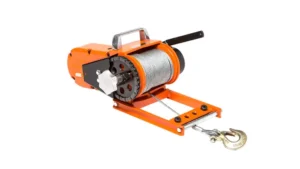
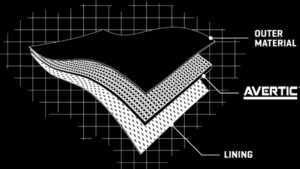


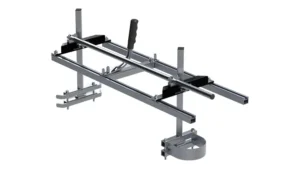
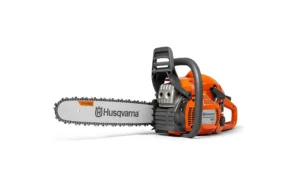
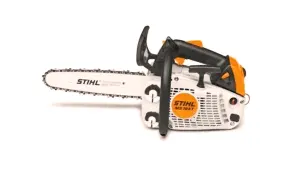
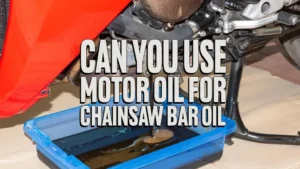
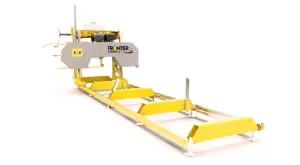
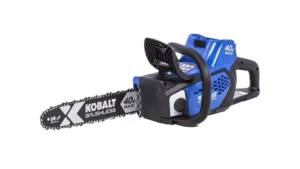
Leave your comment